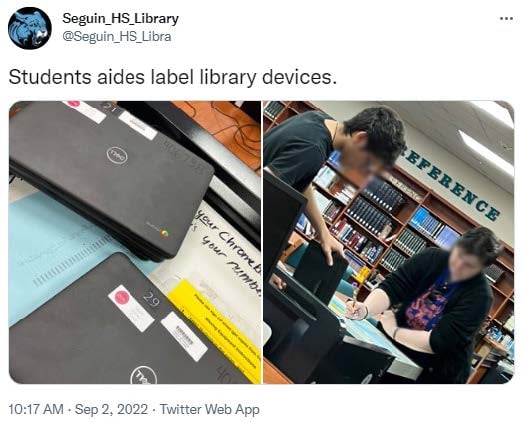
Published October 3, 2022 on the TI2 Blog.
Campus Technology Advisory Committees (CTACs) have been an important part of campus operations for many years and played vital roles in supporting teachers during pandemic-driven remote learning. Despite this, some staff may wonder, “What is CTAC?”
CTACs are campus-level committees made up of teachers, librarians and instructional leaders who meet three times per year to discuss how technology usage, technology integration and the use of relevant digital resources enhances student learning outcomes at the campus. Learn more by watching the video at https://bit.ly/whyCTAC.
At the outset of the new school year, CTACs at every campus worked to set two technology related goals. One goal focuses on device care and management, while the second focuses on student technology integration. These two goals represent critical bookends for effective and meaningful use of student technology in Arlington ISD classrooms. Each relies on the other for a successful technology program, and CTACs are essential in ensuring campus-level needs and goals are prioritized and met.
The device care and management goal is designed to help ensure that students and staff know and follow best practices designed to keep devices in good working condition for their full lifespan. Teachers, substitutes and campus leaders can access a wealth of information about device care at a new district website: https://www.aisd.net/classroomdevices.
Molly Bennett, CTAC facilitator at Butler Elementary, shared, “We are using one Google Sheet to track every device on campus. We know where the device is located and which student or teacher it is assigned to, based on both the classroom device number on the sticker and on the device PIN number. There is much more accountability for the devices, and so far students are taking excellent care of them!”
Technology integration occurs when students leverage technology to learn new subject content and relevant technology skills. In Arlington ISD, one type of integration involves students using digital tools to create products that demonstrate their content understanding. Learn about some of the best tools for student creation at https://www.aisd.net/endorsedapps.
“What excites me the most about Bebensee’s student integration goal is that we will highlight not only staff members, but also students who excel at utilizing our devices and Endorsed Apps to express themselves and demonstrate their learning in a variety of ways,” said Margaret Resendez, the CTAC facilitator at Bebensee Elementary.
From the perspective of Thornton Elementary’s facilitator, Jamika Jefferson, the CTAC’s work is stronger than ever. “This year, the CTAC has worked together as a team to get tasks taken care of across all grade levels. We’re more cohesive as a team and there’s been increased input from everyone on the CTAC.”
Anna Ruiz, facilitator at Key Elementary, agrees. “I love how our team has been able to become one cohesive unit working toward the same vision and technology goals that we set for our campus. By creating these goals, we have the ability to focus on the areas of opportunity at our campus to make the most lasting impact for our students and our teaching practices.”
